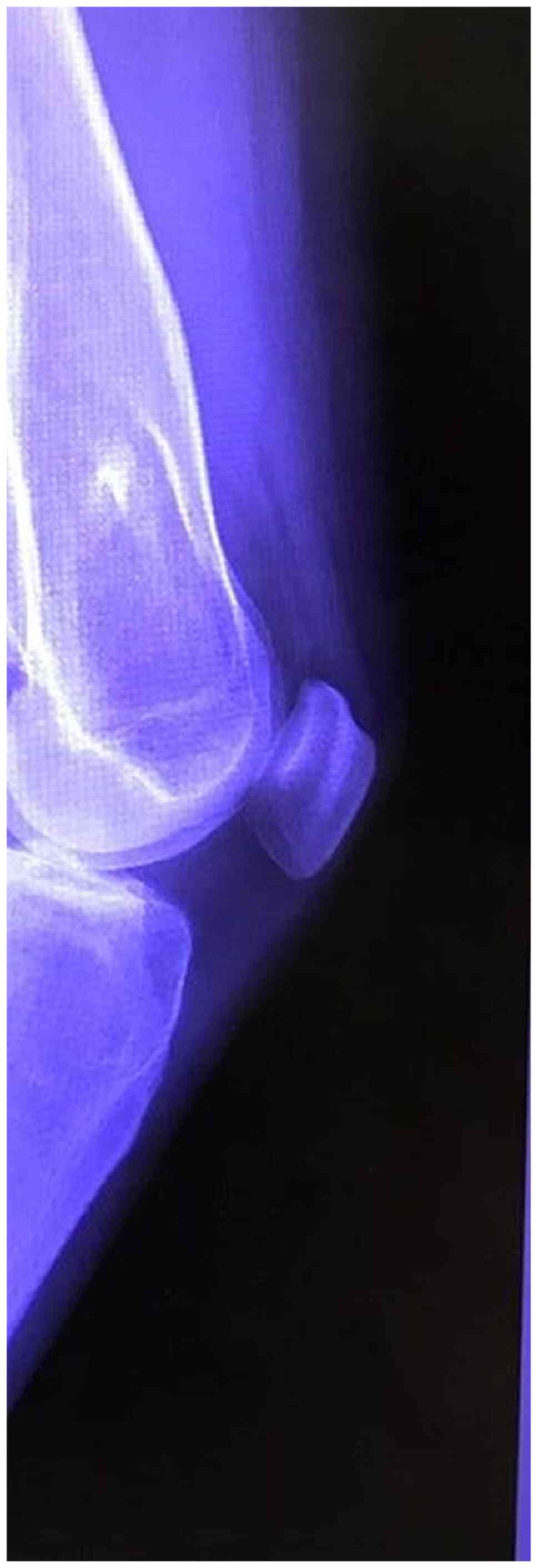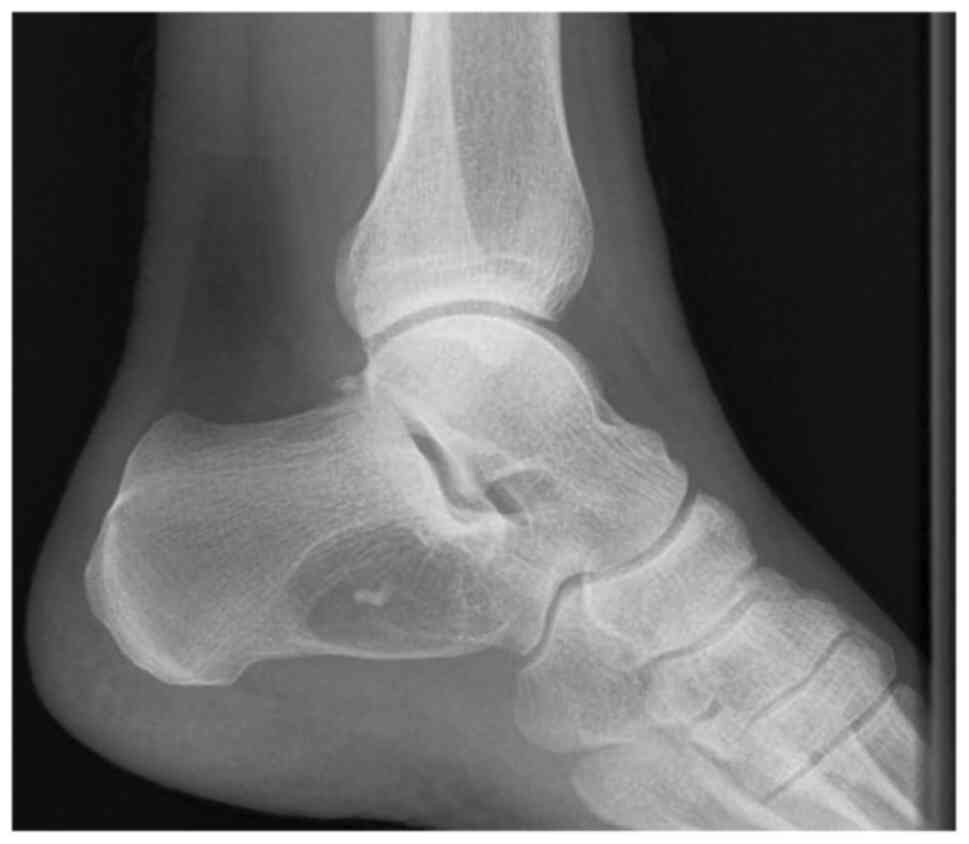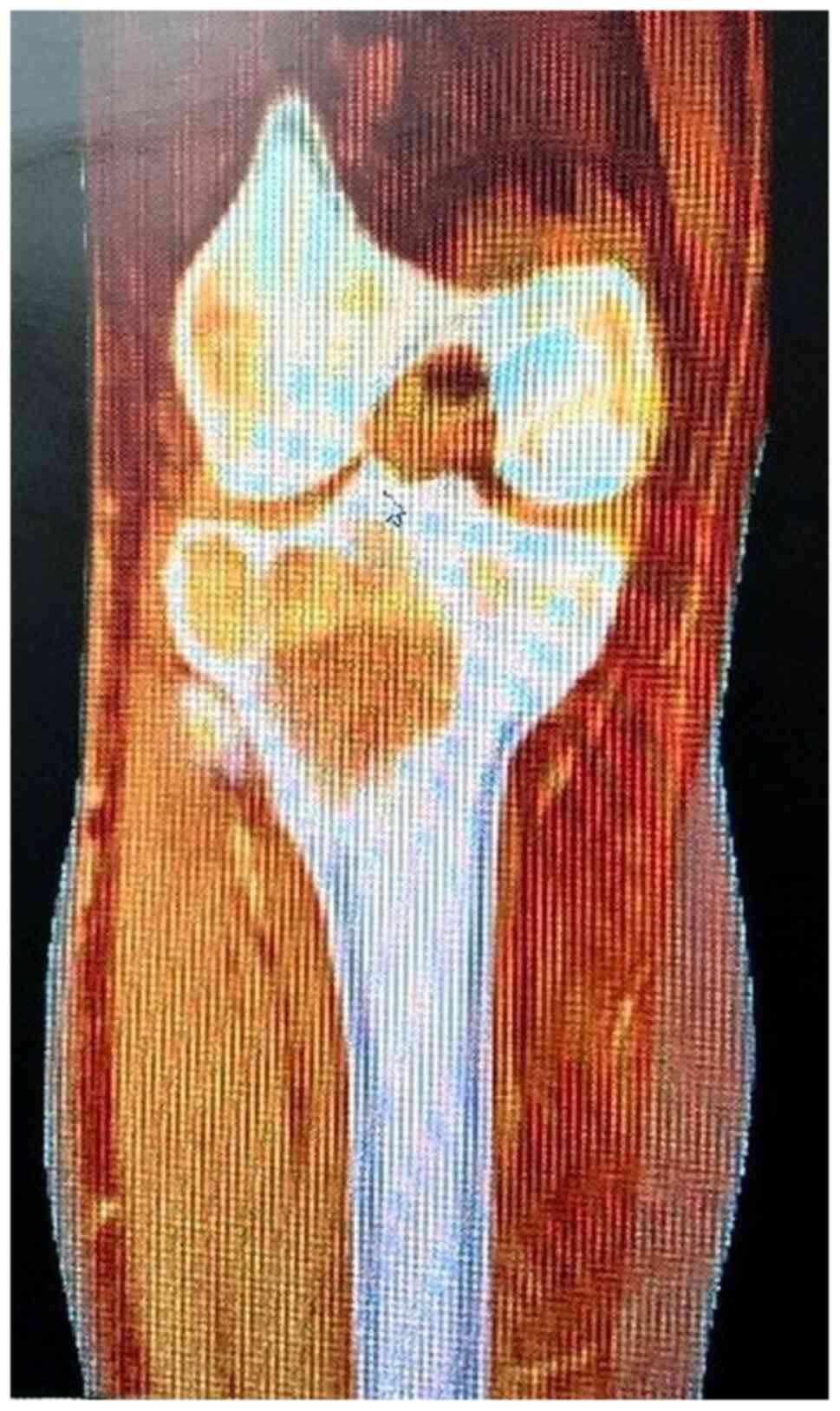|
1
|
Jäger M, Herten M, Fochtmann U, Fischer J,
Hernigou P, Zilkens C, Hendrich C and Krauspe R: Bridging the gap:
Bone marrow aspiration concentrate reduces autologous bone grafting
in osseous defects. J Orthop Res. 29:173–180. 2011.PubMed/NCBI View Article : Google Scholar
|
|
2
|
Damron TA: Use of 3D beta-tricalcium
phosphate (Vitoss) scaffolds in repairing bone defects.
Nanomedicine (Lond). 2:763–775. 2007.PubMed/NCBI View Article : Google Scholar
|
|
3
|
Delloye C, Cnochaert N and Corbu O: Bone
substitutes in 2003: An overview. Acta Orthop Belg. 69:1–8.
2003.PubMed/NCBI
|
|
4
|
Larsson S: Calcium phosphates: What is the
evidence? J Orthop Trauma. 24 (Suppl 1):S41–S45. 2010.PubMed/NCBI View Article : Google Scholar
|
|
5
|
Hirn M, de Silva U, Sidharthan S, Grimer
RJ, Abudu A, Tillman RM and Carter SR: Bone defects following
curettage do not necessarily need augmentation: A retrospective
study of 146 patients. Acta Orthop. 80:4–8. 2009.PubMed/NCBI View Article : Google Scholar
|
|
6
|
Banwart JC, Asher MA and Hassanein RS:
Iliac crest bone graft harvest donor site morbidity. A statistical
evaluation. Spine (Phila Pa 1976). 20:1055–1060. 1995.PubMed/NCBI View Article : Google Scholar
|
|
7
|
Fernyhough JC, Schimandle JJ, Weigel MC,
Edwards CC and Levine AM: Chronic donor-site pain complicating
graft harvesting from the posterior iliac crest for spinal fusion.
Spine (Phila Pa 1976). 17:1474–1480. 1992.PubMed/NCBI View Article : Google Scholar
|
|
8
|
Daculsi G, LeGeros RZ, Nery E, Lynch K and
Kerebel B: Transformation of biphasic calcium phosphate ceramics in
vivo: Ultrastructural and physicochemical characterisation. J
Biomed Mater Res. 23:883–894. 1989.PubMed/NCBI View Article : Google Scholar
|
|
9
|
Khan Y, Yaszemski MJ, Mikos AG and
Laurencin CT: Tissue engineering of bone: Material and matrix
considerations. J Bone Joint Surg Am. 90 (Suppl 1):S36–S42.
2008.PubMed/NCBI View Article : Google Scholar
|
|
10
|
Daculsi G, Weiss P, Bouler JM, Gauthier O,
Millot F and Aguado E: Biphasic calcium phosphate/hydrosoluble
polymer composites: A new concept for bone and dental substitution
biomaterials. Bone. 25 (2 Suppl):59S–61S. 1999.PubMed/NCBI View Article : Google Scholar
|
|
11
|
Van Blitterswijk CA, Grote JJ, Kuijpers W,
Daems WT and De Grout K: Macrospore tissue ingrowths: A
quantitative and qualitative study on hydroxyapatite ceramics.
Biomaterials. 7:137–143. 1986.PubMed/NCBI View Article : Google Scholar
|
|
12
|
Daculsi G and Passuti N: Effect of the
macro porosity for osseous substitution of calcium phosphate
ceramics. Biomaterials. 11:86–87. 1990.PubMed/NCBI
|
|
13
|
Neer CS II, Francis KC, Marcove RC, Terz J
and Carbonare P: Treatment of unicameral bone cysts: A follow up
study of one hundred seventy-five cases. J Bone Joint Surg Am.
48:731–745. 1966.PubMed/NCBI
|
|
14
|
Chapman MW, Bucholz R and Cornell C:
Treatment of acute fractures with collagen-calcium-phosphate graft
material. A randomized clinical trial. J Bone Joint Surg Am.
79:495–502. 1997.PubMed/NCBI View Article : Google Scholar
|
|
15
|
Stanovici J, Le Nail LR, Brennanetal MA,
Vidal L, Trichet V, Rosset P and Layrolle P: Bone regeneration
strategies with bone marrow stromal cells in orthopaedic surgery.
Curr Res Transl Med. 64:83–90. 2016.PubMed/NCBI View Article : Google Scholar
|
|
16
|
Calori GM, Mazza E, Colombo M and
Ripamonti C: The use of bone-graft substitutes in large bone
defects: Any specific needs? Injury. 42 (Suppl 2):S56–S63.
2011.PubMed/NCBI View Article : Google Scholar
|
|
17
|
Dumic-Cule I, Pecina M, Jelic M, Jankolija
M, Popek I, Grgurevic L and Vukicevic S: Biological aspects of
segmental bone defects management. Int Orthop. 39:1005–1011.
2015.PubMed/NCBI View Article : Google Scholar
|
|
18
|
Bohner M: Physical and chemical aspects of
calcium phosphates used in spinal surgery. Eur Spine J. 10 (Suppl
2):S114–S121. 2001.PubMed/NCBI View Article : Google Scholar
|
|
19
|
Nilsson M, Zheng MH and Tagil M: The
composite of hydroxyapatite and calcium sulfate: A review of
preclinical evaluation and clinical applications. Expert Rev Med
Devices. 10:675–684. 2013.PubMed/NCBI View Article : Google Scholar
|
|
20
|
Hatten HP Jr and Voor MJ: Bone healing
using a bi-phasic ceramic bone substitute demonstrated in human
vertebroplasty and with histology in a rabbit cancellous bone
defect model. Interv Neuroradiol. 18:105–113. 2012.PubMed/NCBI View Article : Google Scholar
|
|
21
|
Schindler OS, Cannon SR, Briggs TW and
Blunn GW: Composite ceramic bone graft substitute in the treatment
of locally aggressive benign bone tumours. J Orthop Surg (Hong
Kong). 16:66–74. 2008.PubMed/NCBI View Article : Google Scholar
|
|
22
|
Petruskevicius J, Nielsen S, Kaalund S,
Knudsen PR and Overgaard S: No effect of Osteoset, a bone graft
substitute, on bone healing in humans: A prospective randomized
double-blind study. Acta Orthop Scand. 73:575–578. 2002.PubMed/NCBI View Article : Google Scholar
|
|
23
|
Welkerling H, Raith J, Kastner N,
Marschall C and Windhager R: Painful soft-tissue reaction to
injectable Norian SRS calcium phosphate cement after curettage of
enchondromas. J Bone Joint Surg Br. 85:238–239. 2003.PubMed/NCBI View Article : Google Scholar
|
|
24
|
Golberg VM and Stevenson S: Natural
history of autografts and allografts. Clin Orthop Relat Res. 7–16.
1987.PubMed/NCBI
|

















